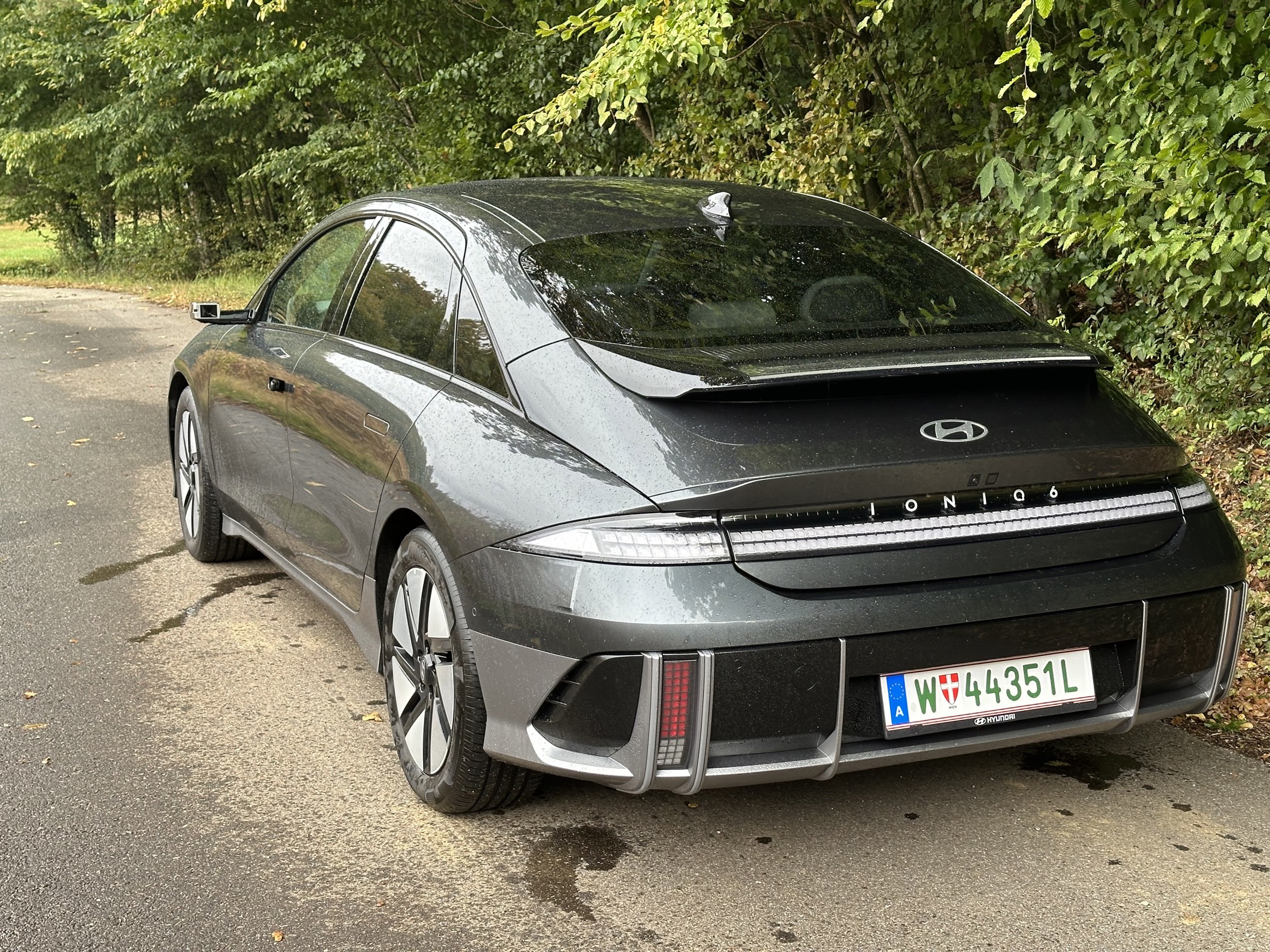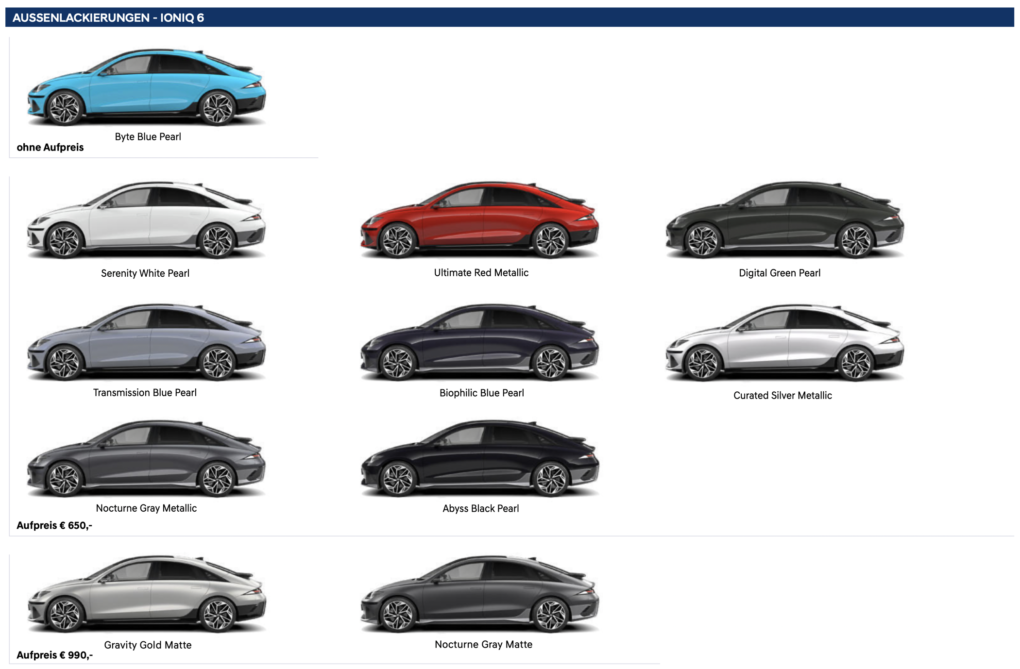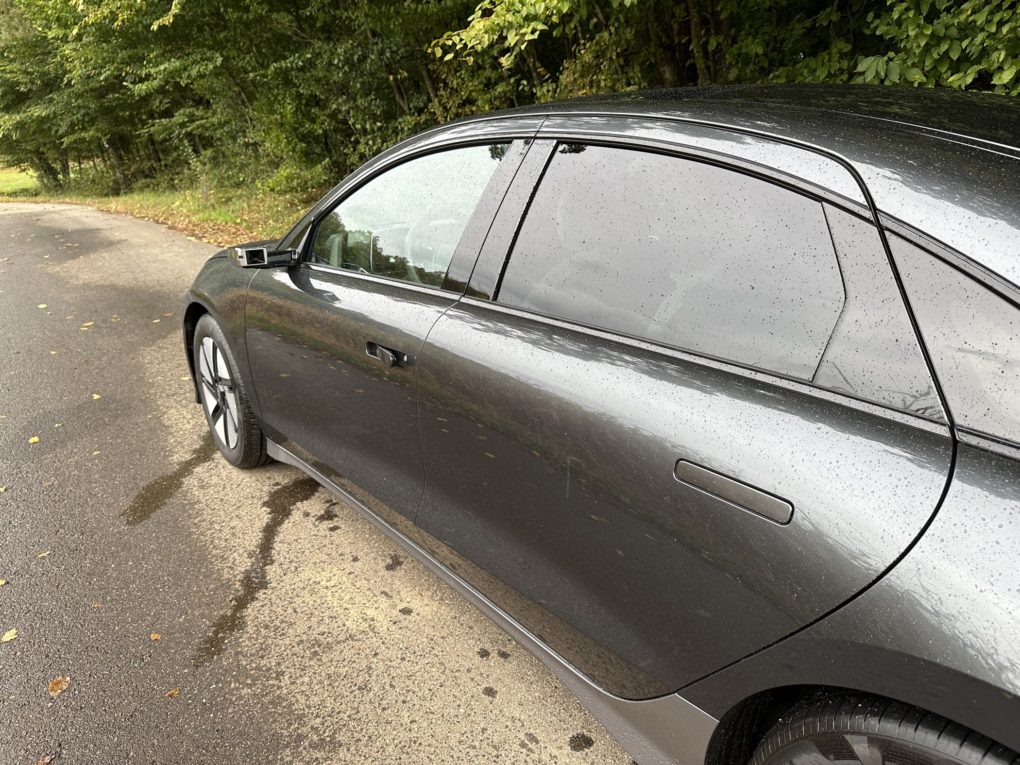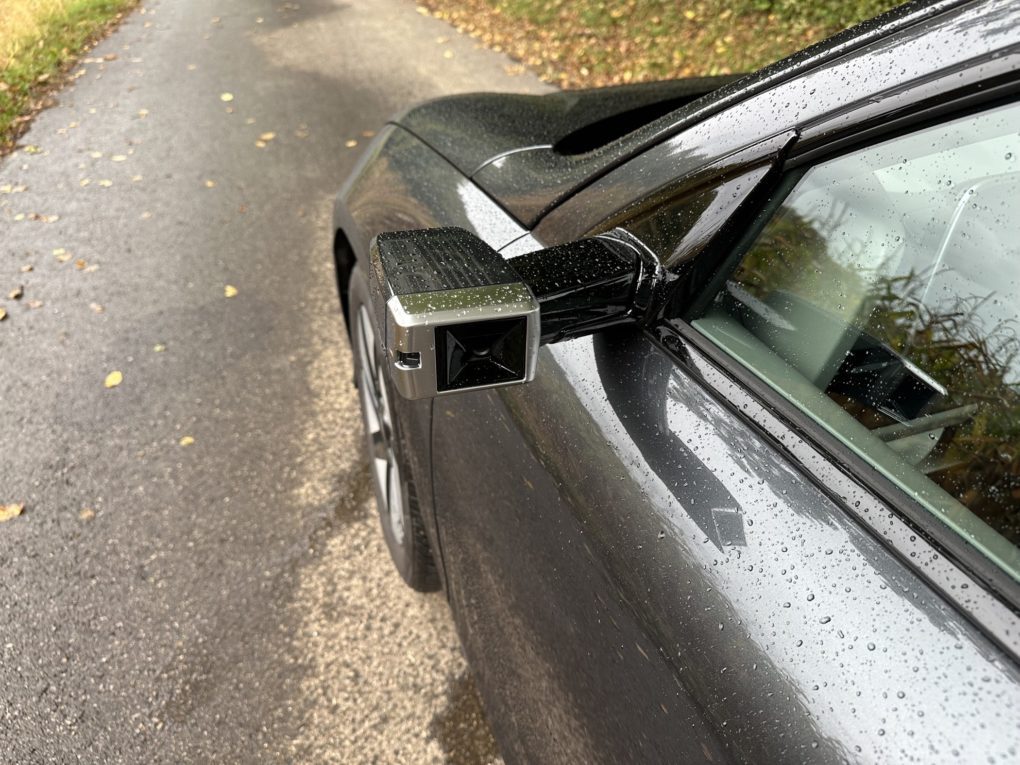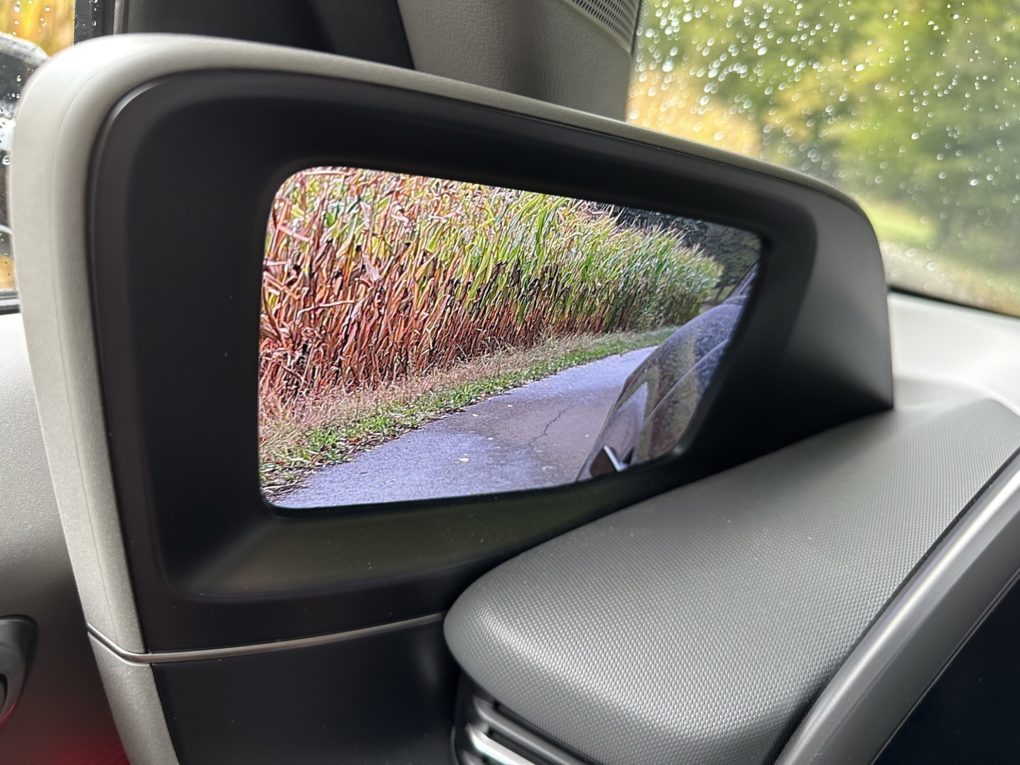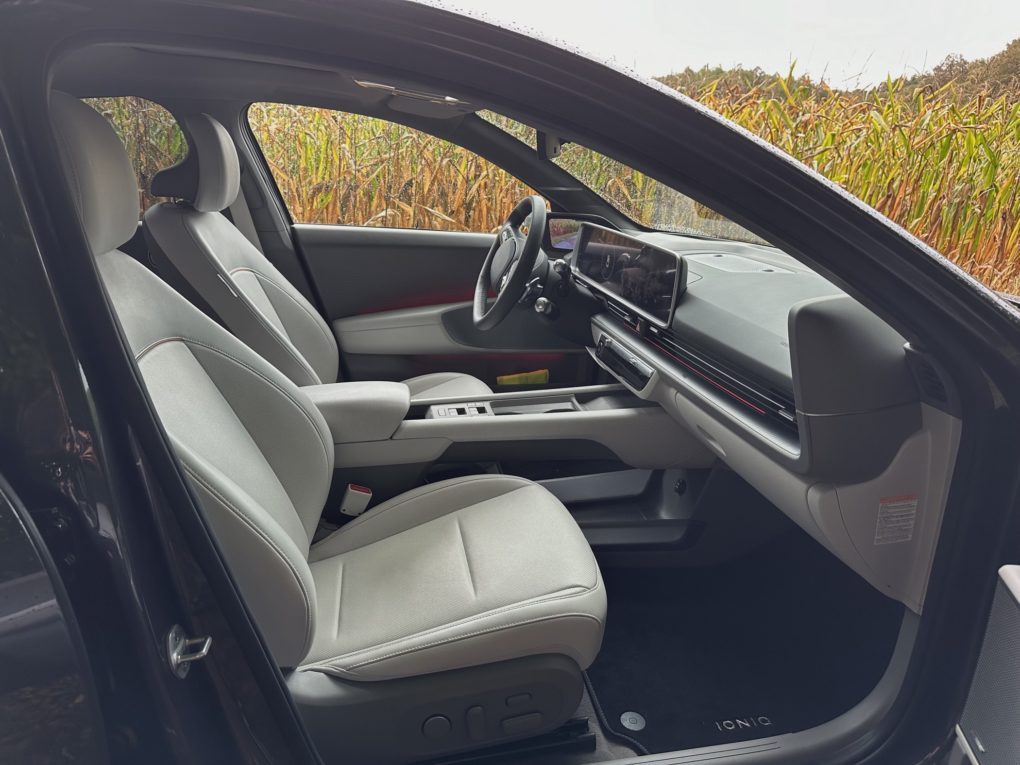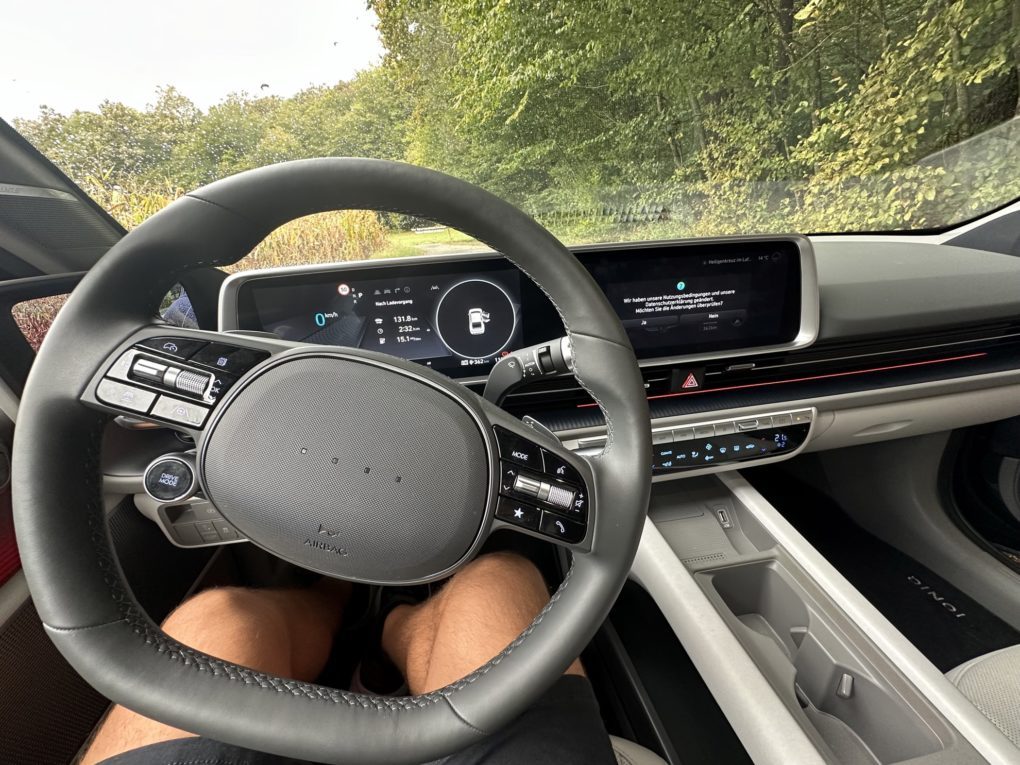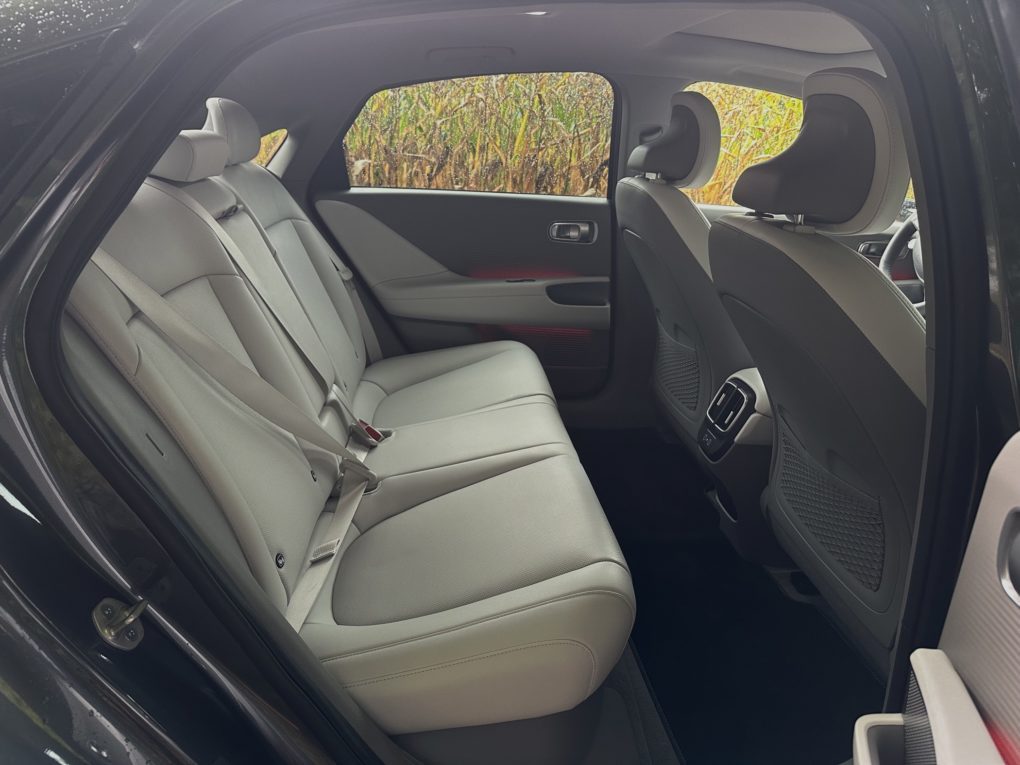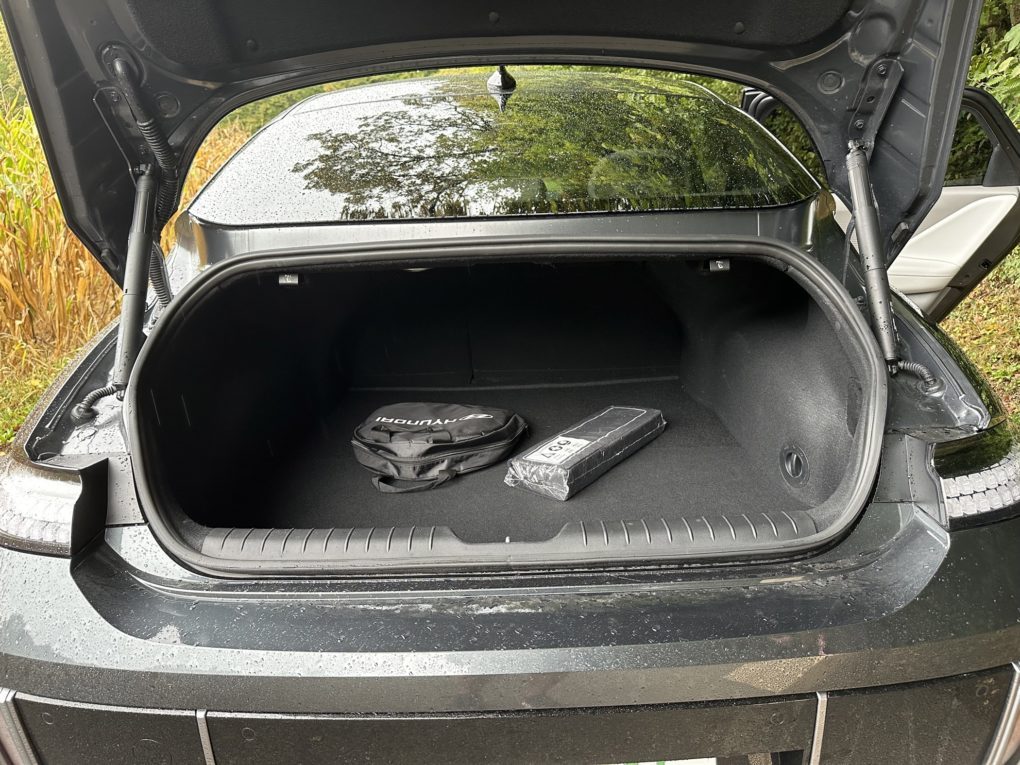Hyundai IONIQ 6 TOP LINE Long Range review: Sporty on the outside and on the inside
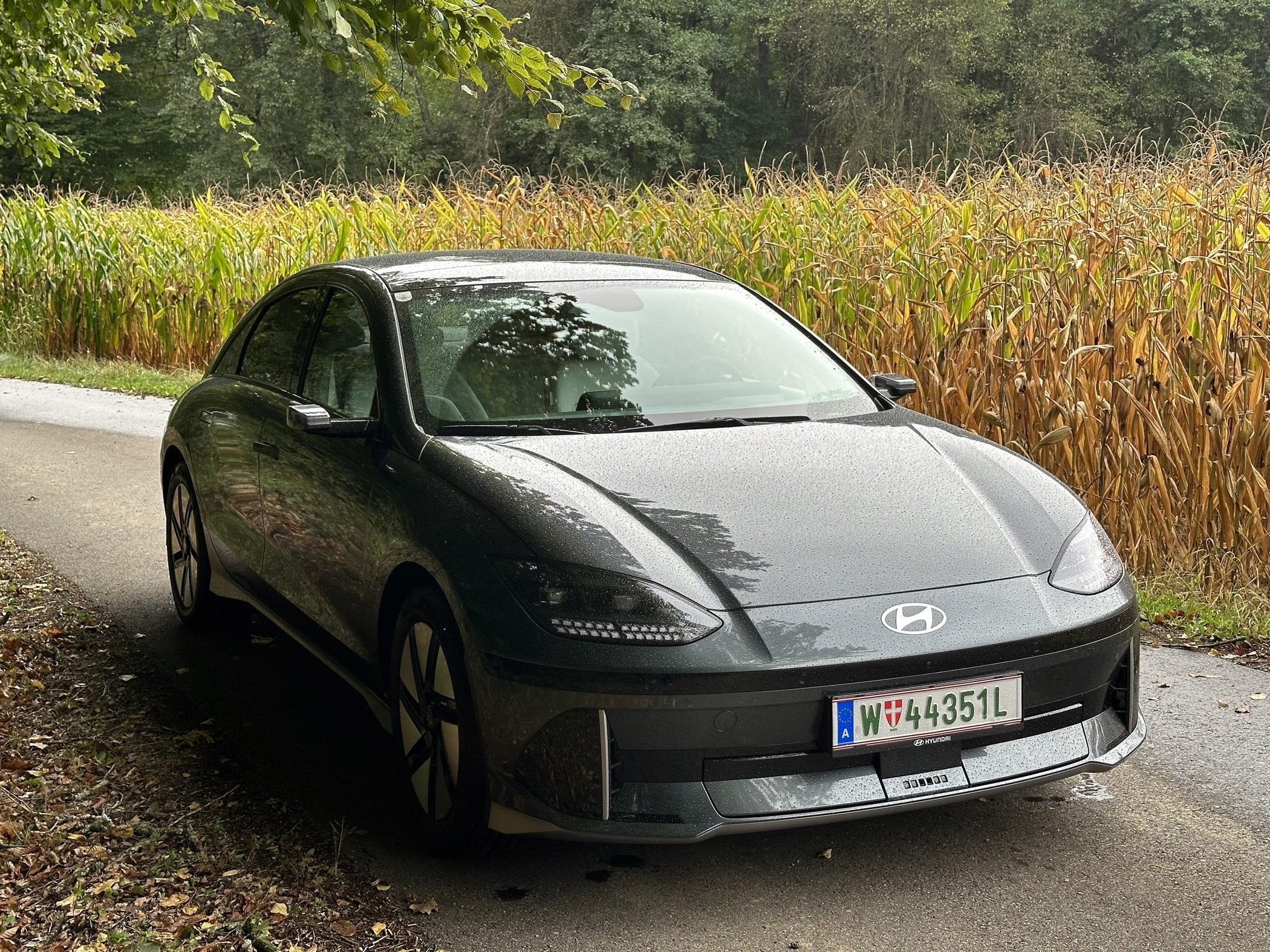
The Hyundai IONIQ 6 is the latest vehicle in Hyundai's all-electric range. I will share my experiences with this with you in this test report.
tl; dr: The Hyundai IONIQ 6 attracts a lot of attention. Hyundai opted for a sporty look here, which is completely different from the look of the IONQ 5 differs. And the design also gives a foretaste of the driving behavior: especially in sport mode, the IONIQ 6 feels much livelier than various other vehicles. However, during my test I also discovered that not everyone liked the appearance.
There are plus points for the assistance systems, among other things. In some situations, these seem to work better than the competition and can also be adjusted very flexibly. I also have to positively mention the relatively low consumption and the long range as well as the maneuverability of the car. I also like the wide selection of paint finishes, the large infotainment and driver information displays and the partly improved interior compared to the IONIQ 5.
Unfortunately, there is a need for improvement in several areas related to infotainment. Especially after starting the car, the performance is still very slow, CarPlay and Android Auto are only supported wired and the speakers lack bass. In addition, there are two components, the camera side mirrors and the electric loading flap, which can be broken more easily than ordinary mirrors and a push-open loading flap. Otherwise, I think that the steering could be a little more grippy, especially in sport mode.
Jump to section
Design
The design of the Hyundai IONIQ 6 triggered two different feelings in people who saw the car. My father reacted to a picture via WhatsApp with a simple but meaningful “Yuck!”, while a gas station attendant when I was shopping for a car wash asked me what kind of “plane” I had, alluding to my conspicuous appearance. I can understand both feelings, because Hyundai's own design features such as the lights at the back and front are very unique. Others, like me, find the sporty demeanor very appealing and overwhelming.
We are dealing with a fairly compact car here. The IONIQ 6 is 4,85 meters long, 2,07 meters wide and just 1,49 meters high. Especially for people with a height of 1,85 meters and upwards, it can get tight in the interior, even though the armchairs can be placed quite far down.
Hyundai offers the Hyundai IONIQ 6 in a variety of colors. The eye-catching options in the round are “Byte Blue Pearl” and “Ultimate Red Metallic.” With “Serenity White Pearl” and “Curated Silver Metallic” there are two bright choices alongside the seven other dark and gray shades. My test car in “Nocturne Silver Metallic” belongs to the latter group.
Let's take a look at what else we notice about the IONIQ 6, starting with the back. A small rear spoiler was attached there with a separate strip underneath. The rear view camera and the button to open the tailgate were installed in this bar. I wonder whether the spoiler could have been combined with this part, as it happened to me several times that I was looking for the trunk button on the spoiler. The taillights with the square lights at the back also stand out.
The charging port is located at the rear right and is protected by an electronic flap. I don't see the advantage in the electronics because compared to other cars it's just one thing that can become defective more quickly.
The door handles can be folded out, which contributes greatly to the sporty look and ensures better aerodynamics. They also remind you to lock the car after getting out. Apropos Locking: Locking with the usual swipe gesture over the handles worked sporadically for me review, while unlocking worked quite reliably.
At the front, the matrix LED headlights with their square lighting elements immediately catch the eye. There is a small frunk under the hood that is perfect for storing charging cables, but is almost a little too small for larger backpacks and bags.
The thing with the side mirrors
Anyone who takes a closer look at my pictures of the IONIQ 6 will probably notice that I haven't touched on one thing yet. Of course I mean the side mirrors, here in the form of two cameras.
- Where are the mirrors? (Picture: TechnikNews)
- This is what the cameras see. (Picture: TechnikNews)
This is being used more and more frequently in trucks, while cameras as side mirrors in cars are still a rarity. In fact, without internet research, I can only think of Audi as a manufacturer that uses something like this in some models. In the IONIQ 6 they are still optional, there is also an option with normal mirrors.
Before my test, I hoped to get a test car without this innovation. And I have to honestly say that during the first few kilometers I didn't always feel in control of the situation. It was only after around 30 kilometers that I got a better feel for the mirrors and didn't always look outside at the cameras when changing lanes. My colleague David, who also enjoyed the Hyundai IONIQ 6 for a few kilometers, had a similar experience.
Once you've gotten through the initial adjustment phase, you'll be able to enjoy the benefits of these mirrors better. One of them is that you get a small notification when there are cars or other things in your blind spot. In general, with the IONIQ 6 it is really an art to miss something in the blind spot thanks to the many warning tones and instructions. What's more, when you turn on your turn signal, you see two lines in the mirror that indicate how far others are behind you.
The cameras are still surprisingly usable in the rain or in tunnels. You can't rely on it when there's actually no light at all, as I experienced after my regular game of poker at one in the morning. It was pitch black there and I had to move a little to the right to get out of the parking space, but there was already another car there. In a normal mirror I would at least see some outline of it, but here I had to look over my shoulder to avoid hitting anything.
And last but not least, I have to emphasize again that the camera mirrors are another part of the car that can break more easily and then become very expensive.
inner space
Hyundai proLike many other manufacturers, Biert tried to keep everything as simple as possible in the interior, which I think works well. Unfortunately, the interior doesn't appear to be of that high quality, which is primarily due to the amount of white plastic. If you compare the whole thing with the driver's cab of the IONIQ 5, you'll notice that Hyundai also improved a few things. The screens are now surrounded by black plastic, which makes them appear a lot larger than they actually are, and the center console is continuous, which gives you more storage space.
Front row
The leather-covered seats are equipped with heating and cooling. The steering wheel can also be heated if desired, has only two spokes and comes with classic buttons and levers, which is a clear plus point as these are still the easiest to use while driving. The gear lever is located behind the steering wheel, although what I don't like about it is that it tends to be covered by the steering wheel.
To the left of the steering wheel is the first of two displays for the side mirror view. These are about the size of most mid-sized smartphones these days. Between the steering wheel and the left display there are buttons for configuring the cameras, which is the same as in any other car.
The driver information display and the infotainment display, each measuring 12,3 inches diagonally, are located in a solid panel. What struck me positively about the driver information display was that it was large and easy to read and also showed details about media playback, which is what I always want. Key data such as the current speed, the maximum permitted speed and warnings for objects in the blind spot can also be seen in the head-up display.
Buttons for adjusting the air conditioning and heating and links to the corresponding menus in the infotainment are located under the middle touchscreen. You can also quickly read the current temperature there, although this display could be sharper and brighter. Hyundai placed buttons with links to the radio, navigation system and other things directly above it. I'm not a fan of these touch buttons, as already mentioned above, but the layout makes sense.
Finally, we come to the storage, starting with the center console. This is not that deep and houses a cup holder. All the buttons that are normally found in the side doors also moved there. It's like mirrors here: strange at first, but at some point handling them becomes second nature. In the obligatory compartment for the smartphone there is a USB-A port for Android Auto and Apple CarPlay (which unfortunately only work wired) as well as a rubberized wireless charging surface. This keeps the device in place and also charges it comparatively quickly. In just a few minutes you have ten again Procent recovered. The box under the armrest contains two additional USB-C ports. There is another storage option under the center console, which in my test was best suited for storing a McDonald's lunch or shopping at the Zotter chocolate factory. There is very little space for this in the side compartments of the doors.
Back seat and trunk
The back row seats are made of the same material as those in the front. Under the armrest of the driver and front passenger there are two charging sockets with USB-C and a small compartment for a smartphone, in-ears or similar things.
- Picture: TechnikNews
- Picture: TechnikNews
When you look at the trunk from the outside, you might think that there isn't much in there. In fact, it is quite flat, but it also goes far forward. In total it holds 401 liters in normal condition, which makes it probably unsuitable for a family.
infotainment
Hyundai shares the infotainment software with Kia. The basic structure of this is simple and the apps are not too overloaded.
The performance of this one needs a little improvement, although mainly right after starting the car. Here, the user's confirmation is often only possible after around 30 seconds and the links to the air conditioning menu only accept entries with a long delay. However, once the IONIQ 6 is woken up, everything runs like clockwork.
The built-in voice assistant couldn't convince me. In principle, this should be able to configure a temperature or call specific people. In reality, in almost all cases he only understands commands at a rate of 90% Procompletely correct and perceives the small details incorrectly, which is why I preferred to do everything manually or ask Siri for help via CarPlay.
The sound system in the Hyundai IONIQ 6 was created in cooperation with Bose. When I first tested it, I liked it just as much as the one in the Škoda Enyaq CoupeUntil my colleague David once asked me to check the EQ settings to see whether a control had been adjusted. And sure enough, the bass was turned up to the max. After changing this setting, my enthusiasm was limited because you can feel the bass in the speakers, but it doesn't reach your body or your ears.
driving experience
The version of my test car has an output of 168,1 kilowatts or 229 hp and can travel at speeds of up to 185 kilometers pro reach hour. For acceleration to 100 kilometers pro hour it takes 7,4 seconds. Only the rear axles are powered.
The software offers the driving modes Eco, Normal and Sport, although a so-called winter mode can be switched on as an option. Changing the modes mainly changes the power output, but it does so noticeably. For sport mode, I would have liked the steering to be a bit more grippy.
As before, the Hyundai IONIQ 6 looks in detailproNot only does it look sporty, it also drives like one. When you press the power pedal, you immediately gain speed and the acceleration only decreases slowly. That's why I like to refer to the vehicle as a "little rocket". However, if you accelerate at higher speeds, it often seems as if the IONIQ 6 is still a little stuck in continuous power and cannot immediately unlock full power. The road holding is very good until you play around with the sport mode a little more, but that's by no means a bad thing. If the road is wet, you should avoid this, as I often found myself slipping even when accelerating slightly. The steering is very light and the car is noticeably more maneuverable than others.
The recuperation is divided into four stages, with the third feeling similar to the Enyaq Coupé I tested. So you don't have to drive with complete foresight, but you don't come to a complete stop immediately either. If you want that, the fourth level (called I-Pedal mode) is for you. Here the effect is a bit stronger and you can also slow down completely. But it's not as strong as Volvo's.
assistance systems
As you would expect, the Hyundai IONIQ 6 is also equipped with several assistance systems. However, one thing is different here: they all work remarkably reliably. Let's go through them:
- Speed detection: This is the system that works the least accurately of all, because I often saw some fantasy speeds. In addition, the permitted speed was also incorrectly recognized when town signs indicate that a lower speed applies on non-priority roads. It is also worth mentioning that you will be warned as soon as you have already traveled one kilometer pro driving too fast for an hour. However, since this requires a regulation in all new cars, Hyundai cannot be considered a disadvantage.
- ACC with steering assistant: The Adaptive Cruise Control and the Steering Assistant keep the distance comfortable and can also manage the transition into a motorway construction site surprisingly well - even in rainy conditions. In addition, the speed is automatically reduced before corners and the steering assistant and cruise control also work independently. My complaint at this point is that the former often goes out too unnoticed - it beeps briefly and then you are immediately on your own.
- Lane change assistant: This only works when actually changing lanes on the motorway, so it cannot direct you to a slow lane. However, he often needs a moment of thought to understand that changing lanes is possible. Once he's done that, he leaves the turn signal activated until the process is finished. I don't know whether that makes sense, because with three-lane highways others might think that you want to change again.
- Cross traffic warning: This makes you very clearly aware of difficult situations, often with a generous lead time.
- Automatic windshield wiper: The automatic windshield wiper reliably ensures that you can always see something through the windshield. What is noticeable, however, is that it does its job a little earlier and a little later.
range and charging
According to the WLTP standard, the Hyundai IONIQ 6, which in the configuration discussed here has a 77,4 kilowatt-hour battery, should travel 614 kilometers before it has to be plugged in again. In reality, when fully charged, the car states that it should travel around 500 kilometers.
In my test, the car was able to prove itself on the first drive from Vienna via the Mühlviertel to Graz (468 kilometers, many motorways). I didn't quite get to my goal, but I only had to take a five-minute break to charge and that left me with 15 Procent remaining charge at my destination. And even that probably wouldn't have been necessary if David and I hadn't carried out the obligatory first acceleration tests in sport mode.
The consumption is 14,3 kilowatt hours pro 100 kilometers stated. In reality, you can only get this value in the city; on the highway it can reach 18 to 20 kilowatt hours pro Climb 100 kilometers.
The IONIQ 6 can be charged with a maximum of 221 kilowatts. In my test with an IONITY charging station with 350 kilowatts, I had 30 before charging Pro17 percent battery capacity, the battery was warmed up and the outside temperature was around 25 degrees Celsius. After 80 minutes the battery level was already at XNUMX Procent, the car was full after 40 minutes. The loading speed was 35 Procent at 151 kilowatts, with 64 Procent at 129 kilowatts, with 78 Procent at 109 kilowatts and with 93 Procent only at 30 kilowatts.
Prices
The particularproThe Hyundai IONIQ 6 is priced at 68.490 euros (including NoVA and VAT and without bonuses or subsidies). The starting price of the cheapest variant (BASE LINE) is 55.490 euros (including NoVA and VAT and without bonuses or subsidies).
We would like to thank Hyundai Austria for providing the Hyundai IONIQ 6!

